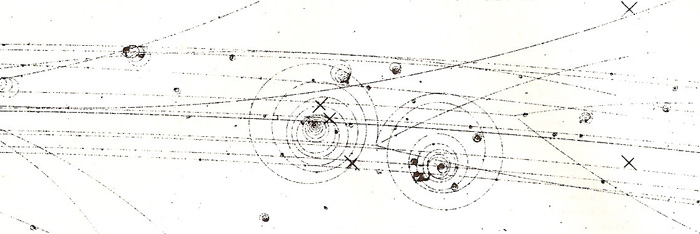antiparticles

The production of an electron-positron pair from a high-energy gamma ray. In this bubble-chamber photograph, a beam of 4.2 GeV/c K- mesons enters from the left. In an event near the middle of the picture one of these mesons gives rise to two new charged particles (forking tracks) and a gamma ray which is uncharged and hence invisible in the bubble chamber. This gamma ray almost immediately converts into a positron-electron pair (tight spirals). The spiral curving the same way as the main beam (clockwise) is the negative electron; the other (curving counterclockwise) belongs to the positron, the corresponding antiparticle.
Antiparticles are counterparts of ordinary subatomic particles, which have the same mass and spin but opposite charge, magnetic moment, and any other internal attributes (including lepton, baryon, strangeness, and charm quantum numbers). Each particle has a corresponding antiparticle, although certain purely neutral particles, such as photons and π° mesons, are their own antiparticles. The antiparticles of the electron, proton, and neutron are the positron, antiproton, and antineutron, respectively.
An encounter between an electron and a positron results in the instantaneous total conversion of the mass of both – annihilation – into energy in the form of gamma rays. When a proton and an antiproton meet, however, the outcome is more complicated. Pions (see meson) are produced, some of which decay to produce gamma radiation and others of which decay to produce muons and neutrinos plus electrons and positrons, which make more gamma rays.


